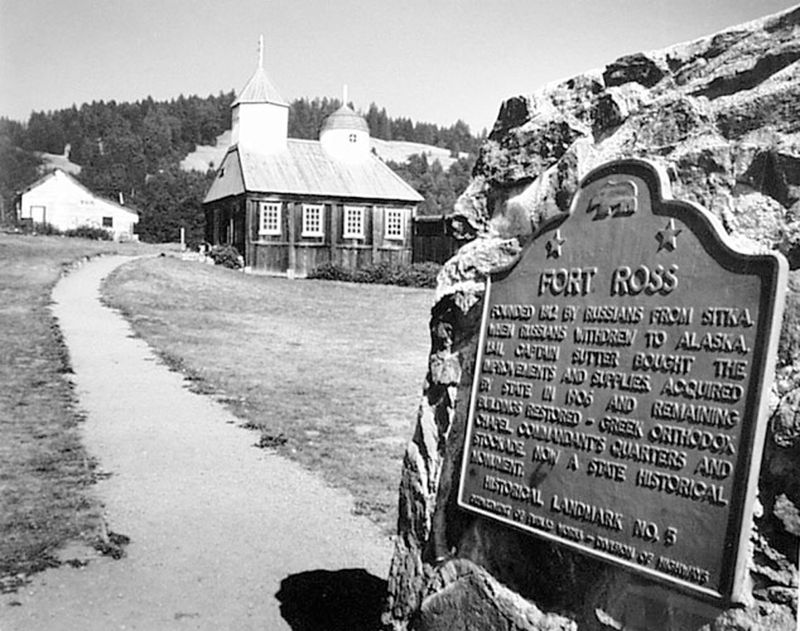
19th, 20th & 21st Century Fine Prints
707-546-7352 · fax 707-546-7924 · web: www.annexgalleries.com · email: artannex@aol.com
Fort Ross Plaque (from the Redwood Empire Collection) by Ansel Adams

Fort Ross Plaque (from the Redwood Empire Collection)
Ansel Adams
Fort Ross Plaque (from the Redwood Empire Collection)
Ansel Adams
1902 - 1984 (biography)A silver print by American photographer Ansel Adams (1902-1984), from the series "Redwood Empire", assembled for an exhibition in 1965 at the San Francisco Museum of Modern Art. The exhibition was circulated in 1975 by the California Historical Society.
The plaque reads: 'Fort Ross / Founded 1812 by Russians from Sitka when Russians withdrew to Alaska, 1811. Captain Sutter bought the improvements and supplies. Acquired by state in 1906 and remaining buildings restored - Greek Orthodox chapel. Commandant's quarters and stockade. Now a state historical monument. / Historical Landmark No. 5 / Department of Public Works - Division of Highways.'
Fort Ross is located in Sonoma County, California on the coast, north of Jenner. The Russian American Company (RAC) established Fort Ross and worked with many diverse people to build and operate the settlement. Fort Ross’ first manager, Ivan Kuskov, chose 25 Russian craftsmen and 80 Alaska Native sea hunters to accompany him on the 1812 voyage that would establish Fort Ross.
"The fort is situated atop a mesa which is surrounded by ravines which abut the sea. It is constructed of redwood planks (there is no other wood used in any of the structures) and forms a palisade. It is four varas high, uniformly, and is surmounted by a beam set with pointed stakes intended to dissuade any assault. It has three gates: one to the northeast, one to the west and one to the southeast..." Diary of Fr. Mariano Payeras, 1822.
“It was called Ross by its commander and founder Kuskov,” writes Father Payeras, whose diary contains some of the earliest descriptions by an outsider after the fort’s completion, September 10, 1812 (modern calendar).
Fort Ross became a State Historic Park as well as a National Historic Landmark in 1962, when the State purchased 353 acres from the Call family. State Highway One still divided the stockade. On Monday morning, October 5, 1970 a fire destroyed the chapel, its intense heat melting the bell. The loss was keenly felt by all and offers of help after the fire were forthcoming from a variety of sources. Another fire set by an arsonist less than a year later burned the roof and attic of the Rotchev house.
The park contains about 3,400 acres of spectacular wildlands. (Drawn from various sources: For more information go to: www.fortross.org/
)